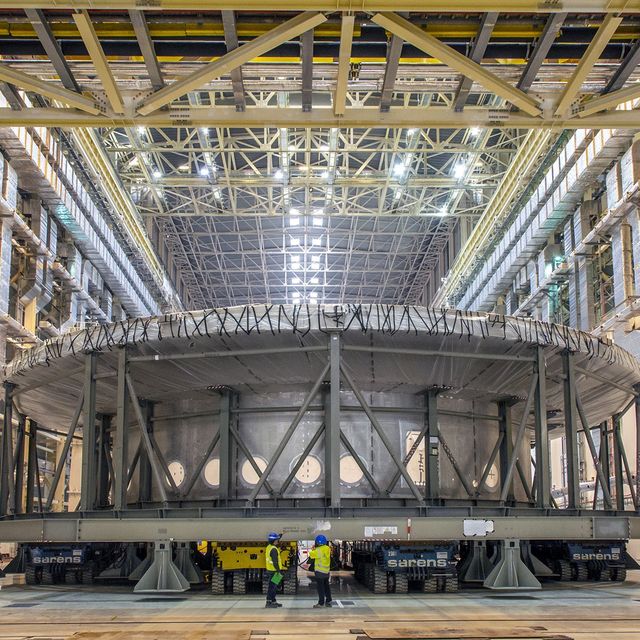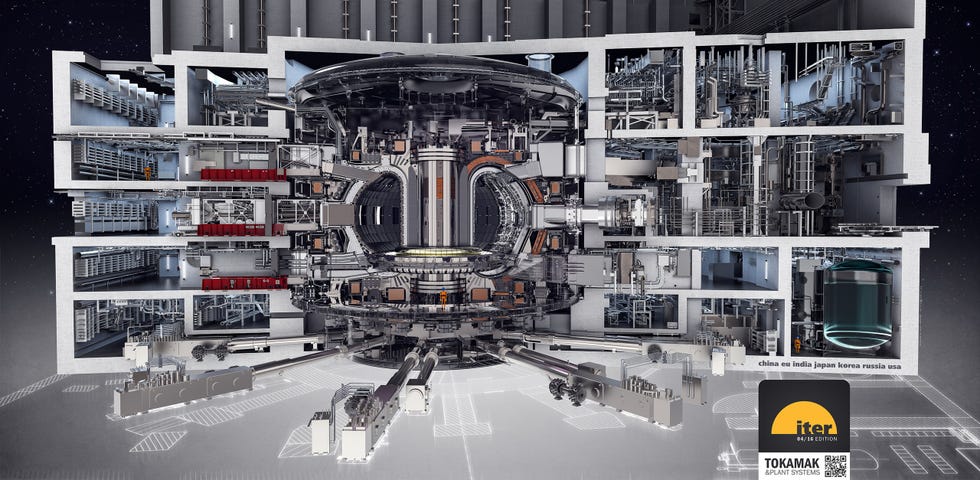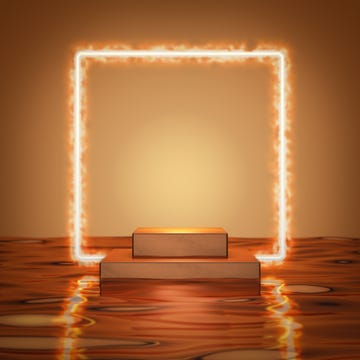- The international ITER tokamak has begun construction and plans to start turning on in 2025.
- Bringing in parts for the 25,000-ton reactor required building a special heavy-duty road.
- ITER is the biggest tokamak fusion reactor project, but far from the only one.
Could nuclear fusion finally be right around the corner ... in 2035?
The International Thermonuclear Experimental Reactor, or ITER, is a 30-year-old project started by President Ronald Reagan and Soviet leader Mikhail Gorbachev. With tens of billions of dollars on the line, this experimental tokamak fusion reactor—a nuclear fusion plasma reactor where extremely hot, charged plasma spins and generates virtually limitless energy—is one of a handful of extremely costly “miniature suns” around the world.
These reactors take years to get up to temperatures hot enough to induce nuclear fusion. Will they ever get there? In July 2019, Scientific American covered the unveiling of the base of the reactor setup: “The section recently installed—the cryostat base and lower cylinder—paves the way for the installation of the tokamak, the technology design chosen to house the powerful magnetic field that will encase the ultra-hot plasma fusion core.”
Over time, ITER will install more and more parts, including some by a specially installed heavy roadway that stretches about 65 miles from the Mediterranean Sea to ITER’s campus in Saint-Paul-lès-Durance in Provence, France. ITER says it’s still on track to switch on the tokamak in 2025, meaning all the parts will be installed and fully integrated and the reactor will begin to accumulate temperature at that time.
It will then take another 10 years, barring incident, for the reactor to reach fusion. Ultimately, ITER’s adherents say it will take in exterior energy and produce 10 times as much energy output. (New Energy Times' Steven Krivit strongly contests this number and shows his work as to why. The plasma will turn out 1000% energy, but that number excludes the electricity to run the multi-ton rig of equipment and electromagnets.) Until now, the closest fusion has come is about two-thirds of input energy and with much lower overall quantities at play.
“To get the atoms whipping around the inner chamber of the Russian-nesting-doll-like machine, a magnet will drive 15 million amperes of electricity through them,” Wired reports. “They'll also be zapped by 24 microwave generators and three semitruck-sized particle guns, until they reach 270 million degrees F and, avec optimisme, crash into each other, releasing heaps of energy.”
At the heart of the ITER tokamak is deuterium and tritium, positively charged ions that must be heated to unfathomably extreme temperatures and smashed together. “Fusion is the process by which light nuclei such as deuterium (2H) and tritium (3H) come together to make helium (4He) and a neutron,” physicist and tokamak consultant Colin Windsor explains. This reaction, at sun-hot temperatures, is what 25,000 tons of ITER equipment will foster.
Even in that explainer, Windsor says solar and wind have both fallen in cost much faster than he and other fusion experts predicted. The argument that these methods only work on “intermittent days” is more and more flabby as energy storage technology springs up around the world. Fusion energy via tokamak, too, is fragile and can be intermittent.
Projects in many countries are in different stages of development, and while ITER is wildly ambitious and has the support of dozens of countries, it’s also a Spruce Goose of sorts in the energy world. Where does ITER fit into a landscape of smaller tokamaks around the world? We have 15 years to find out.

Caroline Delbert is a writer, avid reader, and contributing editor at Pop Mech. She's also an enthusiast of just about everything. Her favorite topics include nuclear energy, cosmology, math of everyday things, and the philosophy of it all.














